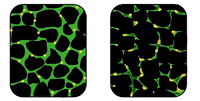
Photo from wikipedia
Introduction Hearing loss is the most common sensory disability, and it is estimated that 50% of cases are caused by genetic factors. One of the genes associated with deafness is… Click to show full abstract
Introduction Hearing loss is the most common sensory disability, and it is estimated that 50% of cases are caused by genetic factors. One of the genes associated with deafness is the eyes absent homolog 4 (EYA4) gene, a transcription factor related to the development and function of the inner ear. Emery–Dreifuss muscular dystrophy is a rare inherited disease characterized by atrophy and weakness of the humeroperoneal muscles, multi-joint contractures, and cardiac manifestations. It is inherited in an autosomal-dominant, X-linked, or less frequently autosomal recessive manner; one of the genes associated with EDMD is the emerin (EMD) gene. Case description A total of two Ecuadorian siblings aged 57 (Subject A) and 55 (Subject B) were diagnosed with deafness and an unspecified type of muscular dystrophy based on family history and clinical findings. Next-generation sequencing (NGS) using the TruSight Cardio and Inherited Disease kits at the Centro de Investigación Genética y Genómica CIGG, Universidad UTE, was performed. The genetic analyses showed two mutations: a stop mutation in exon 11/20 (NM_004100.4:c.940G>T) of the EYA4 gene and a missense mutation in exon 6 (NM_000117.2:c.548C>G) of the EMD gene. Discussion and conclusion The in silico predictions described the EYA4 variant as likely pathogenic and the EMD variant as a variant of uncertain significance (VUS). Moreover, an ancestry analysis was performed using 46 Ancestry Informative Insertion/Deletion Markers (AIM-InDels), and the ancestral composition of subject A was 46% African, 26.1% European, and 27.9% American Indian ancestry, whereas the ancestral composition of subject B was 41.3% African, 38.2% European, and 20.5% American Indian ancestry. The present case report describes two Ecuadorian siblings with a mainly African ancestral component, muscular dystrophy, and deafness phenotypes. Moreover, using next-generation sequencing (NGS), a mutation in the EMD and a novel mutation in EYA4 genes possibly associated with the subjects' phenotype were identified and discussed.
Journal Title: Frontiers in Neurology
Year Published: 2023
Link to full text (if available)
Share on Social Media: Sign Up to like & get
recommendations!